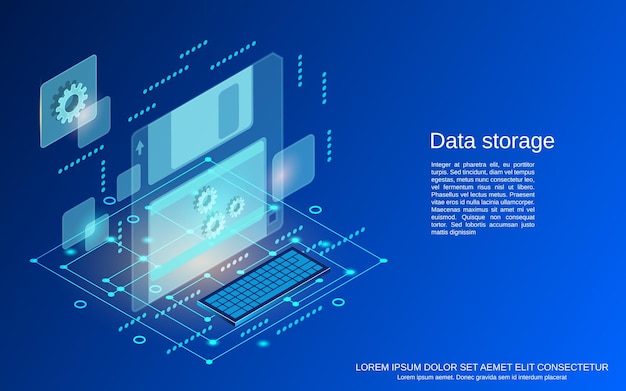As someone who uses electronic devices every day, it's important to understand who's really in control of them. We often take for granted the convenience and accessibility that our devices provide, but we rarely stop to think about who's behind the scenes, making decisions and pulling strings. In this article, we'll explore the concept of control in electronic devices, factors that affect control, and ways to take back control of our devices. Understanding the Concept of Control in Electronic Devices
Control in electronic devices refers to the ability to make decisions and perform actions. When we use our devices, we expect to be able to perform certain actions, such as sending a message or making a phone call. However, these actions are not always entirely in our control. The device's hardware, software, and settings all play a role in determining what actions we can perform and how we can perform them.
For example, when we use a smartphone, we have access to a wide range of apps and functions. However, we can only use these apps if they are compatible with our device's operating system and hardware. Additionally, our device's settings may limit our ability to perform certain actions. For instance, we may not be able to download certain types of files or access certain websites due to parental controls or corporate policies.
Factors That Affect Control in Electronic Devices
Several factors can affect control in electronic devices, including hardware limitations, software compatibility, and user settings.
Hardware limitations refer to the physical capabilities of the device. For example, a smartphone with a smaller screen may not be able to display certain types of content as effectively as a larger-screen device. Similarly, a device with limited storage space may not be able to store as many files as a device with more storage.
Software compatibility refers to the ability of the device's operating system to work with different types of software. For example, an app designed for iOS may not work on an Android device. Additionally, updates to the operating system may render certain apps incompatible.
User settings refer to the preferences and restrictions set by the device's owner or administrator. For example, parental controls may limit a child's ability to access certain types of content, while corporate policies may restrict an employee's ability to download certain apps or use certain features on their device.
The Illusion of Control: Why We Think We're in Control of Our Devices
Despite the factors that affect control in electronic devices, many of us believe that we're in complete control of our devices. We customize our settings, download apps that fit our needs, and make decisions about how we use our devices. However, this sense of control is often an illusion.
Manufacturers and service providers have a significant amount of control over our devices. They determine which apps are available in their app stores, which updates are released, and which features are included in new devices. Additionally, they collect a vast amount of data about our device usage, which they can use to make decisions about future products and services.
Who Really Controls Your Electronic Devices?
So, if manufacturers and service providers have so much control over our devices, who's really in control? The answer is complicated. In some cases, we have control over our devices, but that control is limited by the factors we discussed earlier. In other cases, manufacturers and service providers have more control than we do.
For example, if you use an iPhone, Apple has a significant amount of control over your device. They determine which apps are available in the App Store, which updates are released, and which features are included in new devices. Additionally, they collect data about your device usage, which they can use to make decisions about future products and services.
Similarly, if you use a device that runs on Google's Android operating system, Google has a significant amount of control over your device. They determine which apps are available in the Google Play Store, which updates are released, and which features are included in new devices. Additionally, they collect data about your device usage, which they can use to make decisions about future products and services.
A good question to ask, does the amount of time I spend on my electronic device affect other things? Does time spent on my device take time away from other responsibilities I have? How well do I monitor time spent on my electronic devices? These questions are only answered by the individual.
The Role of Manufacturers in Controlling Electronic Devices
Manufacturers play a significant role in controlling electronic devices. They determine which features are included in devices, which updates are released, and which apps are available in their app stores. Additionally, they collect data about device usage, which they can use to make decisions about future products and services.
Some people argue that manufacturers have too much control over our devices. They argue that manufacturers should be more transparent about their data collection practices and provide users with more control over their devices.
Government Regulations and Control of Electronic Devices
Governments also play a role in controlling electronic devices. They create laws and regulations that dictate how devices can be used and how data can be collected. For example, the General Data Protection Regulation (GDPR) in the European Union regulates how companies can collect and use personal data.
However, government regulations can also limit our control over our devices. For example, some countries restrict access to certain websites or apps, limiting their citizens' ability to use their devices as they see fit.
Ways to Take Control of Your Electronic Devices
While manufacturers and service providers have a significant amount of control over our devices, there are ways to take back some of that control.
One way to take control of your device is to use open-source software. Open-source software is software that is free to use and modify. It allows users to customize their devices to their liking and provides more transparency about how the software works.
Another way to take control of your device is to limit the data you share with manufacturers and service providers. You can do this by adjusting your privacy settings and being mindful of the apps you download. Additionally, you can use a virtual private network (VPN) to encrypt your internet traffic, making it more difficult for others to collect data about your device usage.
The Reality of Control: Who's Really in Control of Our Devices
The reality of control in electronic devices is complicated. While we may have some control over our devices, that control is limited by factors such as hardware limitations, software compatibility, and user settings. Additionally, manufacturers and service providers have a significant amount of control over our devices, determining which apps are available, which updates are released, and which features are included in new devices.
However, there are ways to take back some of that control. By using open-source software, limiting the data we share with manufacturers and service providers, and being mindful of our app choices, we can take back some of the control over our devices.
Apps and Software: How They Control Our Devices
Apps and software play a significant role in controlling our devices. They determine which functions we can perform and how we can perform them. Additionally, they collect data about our device usage, which manufacturers and service providers can use to make decisions about future products and services.
To take control of your device, it's important to be mindful of the apps and software you use. You can do this by reading app reviews and researching the software before you download it. Additionally, you can adjust your app and software settings to limit the data they collect about your device usage.
Data Collection: How It Affects Who's in Control of Our Devices
Data collection is another factor that affects who's in control of our devices. Manufacturers and service providers collect vast amounts of data about our device usage, which they can use to make decisions about future products and services.
To take control of your device, it's important to be mindful of the data you share with manufacturers and service providers. You can do this by adjusting your privacy settings and being mindful of the apps you download. Additionally, you can use a VPN to encrypt your internet traffic and make it more difficult for others to collect data about your device usage.
Balancing Control and Convenience: Tips for Taking Back Control of Your Devices
Balancing control and convenience is important when taking back control of your devices. While it may be tempting to use the most convenient apps and services, these may also be the ones that collect the most data about your device usage.
To take back control of your device while still maintaining convenience, it's important to be mindful of the apps and services you use. You can do this by reading app reviews, researching software before you download it, and adjusting your app and software settings to limit the data they collect about your device usage. Additionally, you can use open-source software and a VPN to provide more transparency and security.
In conclusion, understanding who's really in control of our devices is essential for taking back control and protecting our privacy. While manufacturers and service providers have a significant amount of control over our devices, there are ways to take back some of that control. By using open-source software, limiting data collection, and being mindful of our app and software choices, we can take back control of our devices and protect our privacy.

 For many homeowners, the chimney is a vital part of the home. It provides warmth during the colder months, and it's a place where families gather to relax and spend time together. However, like any other part of the house, chimneys can develop problems over time. Common issues include blockages, cracks, and wear and tear. If left unchecked, these problems can lead to more significant issues, such as chimney fires and carbon monoxide poisoning. This is why it's essential to seek professional chimney services to ensure that your chimney is functioning correctly and safely.
For many homeowners, the chimney is a vital part of the home. It provides warmth during the colder months, and it's a place where families gather to relax and spend time together. However, like any other part of the house, chimneys can develop problems over time. Common issues include blockages, cracks, and wear and tear. If left unchecked, these problems can lead to more significant issues, such as chimney fires and carbon monoxide poisoning. This is why it's essential to seek professional chimney services to ensure that your chimney is functioning correctly and safely.

